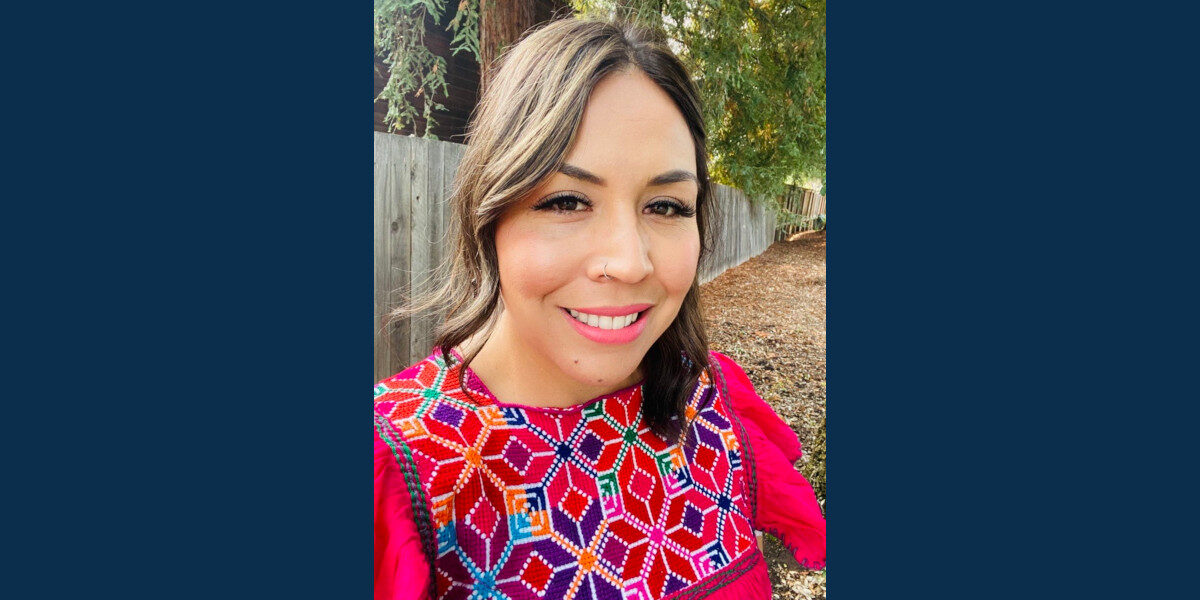

Partner Spotlight: Alliance Medical Center Behavioral Health
5 min read. A conversation with Maria Juarez Sanchez, Director of Behavioral Health Services at Alliance Medical Center.
The Healthcare Foundation recognizes that the country’s mental health crisis is not distributed evenly but disproportionately impacts our communities along economic and ethnic lines. Through grants and our own Mental Health Talent Pipeline scholarship program, the Healthcare Foundation supports increased access to mental and behavioral health services for vulnerable and underserved populations across northern Sonoma County as well as programs to increase resiliency and capacity among those serving the community.
Alliance Medical Center, a Healthcare Foundation grantee and community partner, offers medical, dental and behavioral health services to the underserved communities of Healdsburg, Windsor and the surrounding Northern Sonoma County region. Alliance’s behavioral health offerings include assessment, treatment, and support for a variety of mental, emotional, and substance use conditions and support adults, families, teens, and children through a wide range of services and treatments. The bilingual staff serves a largely Latine clientele, the majority of whom are Spanish speakers. Patients are overwhelmingly Medi-Cal or Medicare recipients or seen on a sliding scale.
With the aim of better understanding, and increasing awareness around, the need for mental health services in our region, as well as the approaches and resources that can best meet that need, we spoke recently with Maria Juarez Sanchez, Director of Behavioral Health Services at Alliance Medical Center.
Can you describe your position at Alliance Medical Center?
I started at Alliance in September of 2019 as a licensed clinical social worker. I’m in the pediatric area, so I see children and families primarily. I became the Interim Behavioral Health Director in 2021, and moved into the full role as Behavioral Health Director in 2022. I’m also still seeing patients. I live in Santa Rosa, so I am able to provide onsite services in person. I know many in our community are struggling to get in to see an in-person provider, so I’m glad to be able to offer that. It is an important value for us at Alliance to stay grounded in our mission by having those connections with our patients.
“Our entire clinical team has pivoted to understand that we can’t do very extensive clinical work with our community without meeting these basic needs.”
Maria Juarez Sanchez, LCSW
What is the makeup of the team you oversee?
It’s a growing team. When I started it was only our BH director and a few LCSWs [Licensed Clinical Social Workers], a psychologist and psychiatry. Since then we’ve grown into a team of seven LCSWs. We don’t have a psychologist currently but we are onboarding our first-ever MFT [Marriage and Family Therapist] later this month, so we’ll be a team of eight. Some live in the LA area; we have one out-of-state provider; and the others are in the Bay Area, two of us providing onsite care. We also have three psychiatrists on staff. They are part-time but we are able to offer access to psychiatry pretty quickly. Although it’s only for adults at this time, it’s been really valuable to be able to provide that in-house to our patients and to have the team consult on complex cases. Many of those we see, especially the adults, may present dual diagnoses, so we do offer substance use disorder (SUD) treatment and counseling. We’ve been doing warm hand-offs to our SUD counselor and providing additional resources for those who are ready for that.
Are the therapists’ remote service offerings driven by necessity?
During Covid it became very clear that, though we made a great effort to recruit local talent, it was very challenging to do so. We didn’t have a lot of individuals apply. As the Healthcare Foundation is well aware, because this is the reason for your Mental Health Talent Pipeline, there’s a shortage of local therapists available to serve our patients, the majority of whom are Spanish-speakers. Most of our staff have been with us two or three years and more, so they’ve learned to understand the specific needs of the community. But of course there’s a difference as far as actually living in the community, where you get a sense and feel of what individuals go through, especially around the challenges with respect to basic social determinants of health. That’s been something our team has really focused on this last year, comprehending patient needs as they’re impacted here in northern Sonoma County, and how it may differ from lived experience in their own communities.
How do you address the social determinants of health in the clinical setting?
It took some time to understand that we have to shift our thinking as clinical providers. As much as we want to do the critical therapeutic work with our patients, it’s very difficult to accomplish this with someone who is struggling with basic material well being, with where they’re going to sleep, how they’re going to eat or provide food for their family, and so on. Along this line, I have championed our social determinants of health screening project. The idea is to really comprehend the need we’re seeing and how Behavioral Health Services can be that link in a referral process that closes the loop for patients, making sure they have the full support they need and deserve. The fact is we didn’t always understand that patients were not necessarily being connected fully when we would refer them to a community-based organization. So we piloted a program where we were able to not only track who has been screened but what the specific need is, where we are sending that patient, and then verifying that the patient gets connected to those resources.

How has this been working?
It’s been very successful. A lot of this work has been done via our Community Health Workers. We currently have two full-time onsite CHWs. They’re doing the outreach and connecting with patients to make sure they are getting connected to those resources, and providing support to individuals with literacy issues or who may need support with paperwork. There’s been increased support in identifying and addressing food insecurity, supporting people with financial resources, and just validating the challenges with housing in our community. Our entire clinical team has pivoted to understand that we can’t do very extensive clinical work with our community without meeting these basic needs.
What are the current trends you’re seeing?
We have noticed an increase in pediatric referrals overall. With children going back to school [after Covid school closures] there was obviously a high increase of anxiety and depression, stemming from the isolation. What I have also seen is the stress on parents, the worry about not being able to provide for one’s family, having to work even more and, as a result, spending even less time with their children at home. This means children are having to raise themselves or having elders raise them in some cases. It’s creating a different dynamic, children worrying about rent. This is something I had not seen so much in the past. Or children feeling like they have to have a job at 14 or 13 because they constantly hear their parents struggling with money and not having enough to pay the rent. It’s become a high number of children and families that we’re seeing, but of course it’s a mix of adults as well.
Is stress one of the main health issues you are treating?
We recently ran a report, and the main reported problem is excess anxiety. That is a change from what we knew before, when depression was the primary diagnosis we were serving. I have to say, the report didn’t really surprise me. The majority of what I hear in consultations and in our staff meetings is that people are experiencing a lot of anxiety. I think the pandemic exacerbated what was happening to many people already but about which they had less awareness—this fight/flight/freeze response became almost a daily occurrence for them, worrying constantly and not being able to stop that.
Where is the worry focused in general?
The worry we hear about most is access to housing. And also financial worries. How do they pay the rent? How do they afford living in a home where they don’t have to live with five, ten people who are not even relatives? Then the stressors around just being able to provide for oneself and one’s family, to have access to food. We do a food distribution two times a week. It’s always a success in the way people get that access, but it’s starting to be not enough. You probably read about this in the Press Democrat, that there’s a real challenge now in meeting the demands of the community simply for food. That is something that we’re starting to hear a lot more about.
What can people do who are concerned about anxiety or other mental health issues?
People are welcome, and can gain access to services, at either of our sites. Usually people either obtain a referral from their healthcare provider or they self-refer, but there’s no wrong door for engaging us about behavioral health services. We have focused on integration at the Health Center so everybody is well aware of how best to support someone in getting scheduled with an appointment at behavioral health. And we always encourage other community-based partners to support with additional resources. We’ve partnered with Sonoma County Resiliency Collaborative, for example, which offers wellness groups for mind-body skills that reinforce some of the knowledge around self- and co-regulating and body-awareness that we’re providing to our patients. We’re always highlighting what is available in addition to what we’re able to offer, because we recognize that having an individual session every two weeks may not be enough.

Related News + Stories
Invest in Our Community
Your support is vital to our collective vision of eliminating health inequities in northern Sonoma County.
Donate



